Abstract
OBJECTIVE: To describe national trends in mammography use by race and income and to test whether higher use of mammography among low-income African American women than low-income white women can be explained by health insurance coverage, usual place of health care, or place of residence. DATA SOURCES/STUDY SETTING: Data from five years of the National Health Interview Survey spanning the period 1987-1994. STUDY DESIGN: Trends in the percentage of women 50-64 years of age with a mammogram within the past two years were analyzed by race and income. Data for 1993-1994 were pooled, and with logistic regression analysis, variation in use of recent mammography for low-income women was investigated. Independent variables are age, race, family income, education, health insurance coverage, place of usual source of health care, metropolitan residence, and geographic region. DATA COLLECTION/EXTRACTION METHODS: The National Health Interview Survey is a cross-sectional national survey conducted by the National Center for Health Statistics. Data are collected through household interviews. [Editor's note: in keeping with HSR policy, the term black is used to conform to its use in the surveys studied. In other references to race, the term African American is used.] PRINCIPAL FINDINGS: Among women 50-64 years of age use of recent mammograms increased rapidly between 1987 and 1991 for all groups of women, and between 1991 and 1994 the increases slowed. However, increases between 1991 and 1994 have been more rapid among low-income black women than among low-income white women. In 1993-1994, low-income black women were about one-third more likely than low-income white women to report mammography within the past two years. This difference could not be explained by health insurance coverage, usual source of health care, metropolitan status, or region of residence. CONCLUSIONS: These results, which provide some evidence of success for screening programs targeted to the poor, raise the question of why low-income black women appear to be to more likely than low-income white women to have benefited from recent efforts to promote mammography. Continued evaluation of mammography programs focused on women who are underserved as well as the monitoring of trends and variations in service use by race and income are needed.
Full text
PDF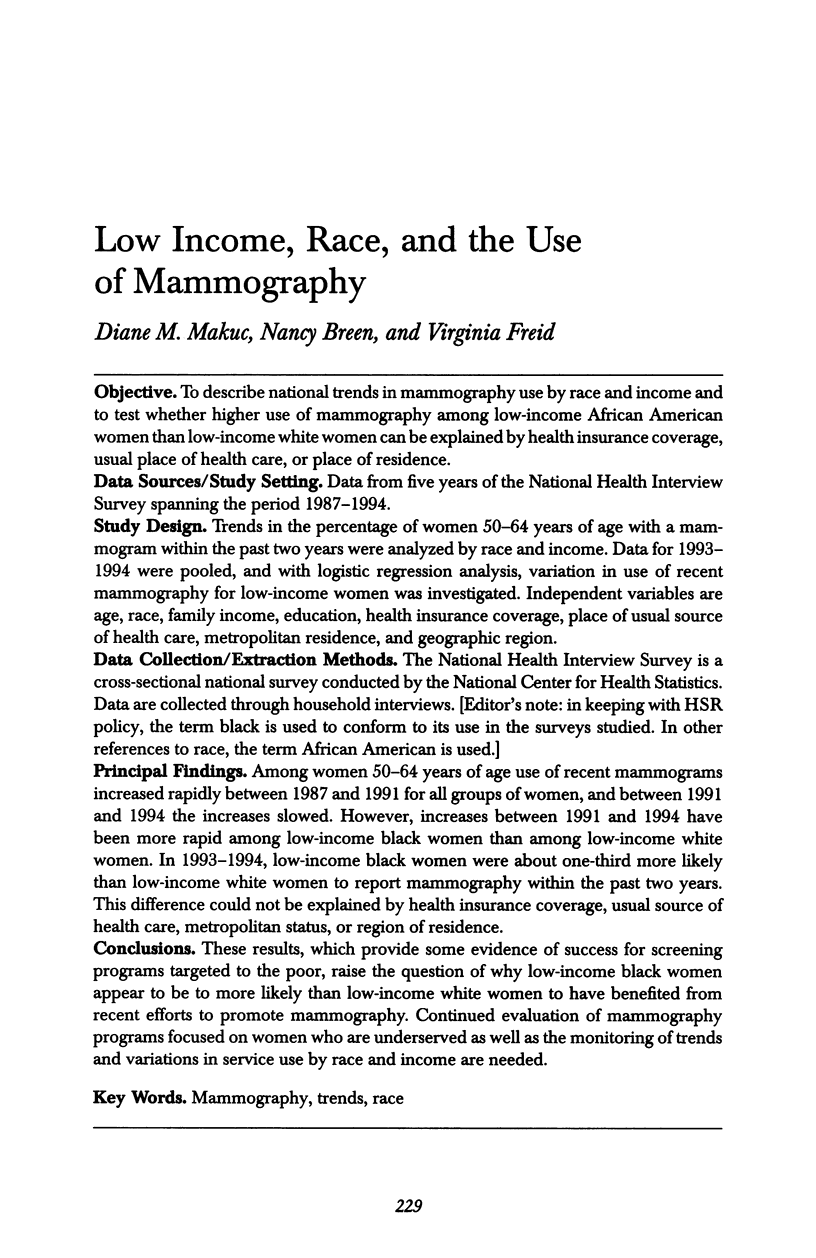
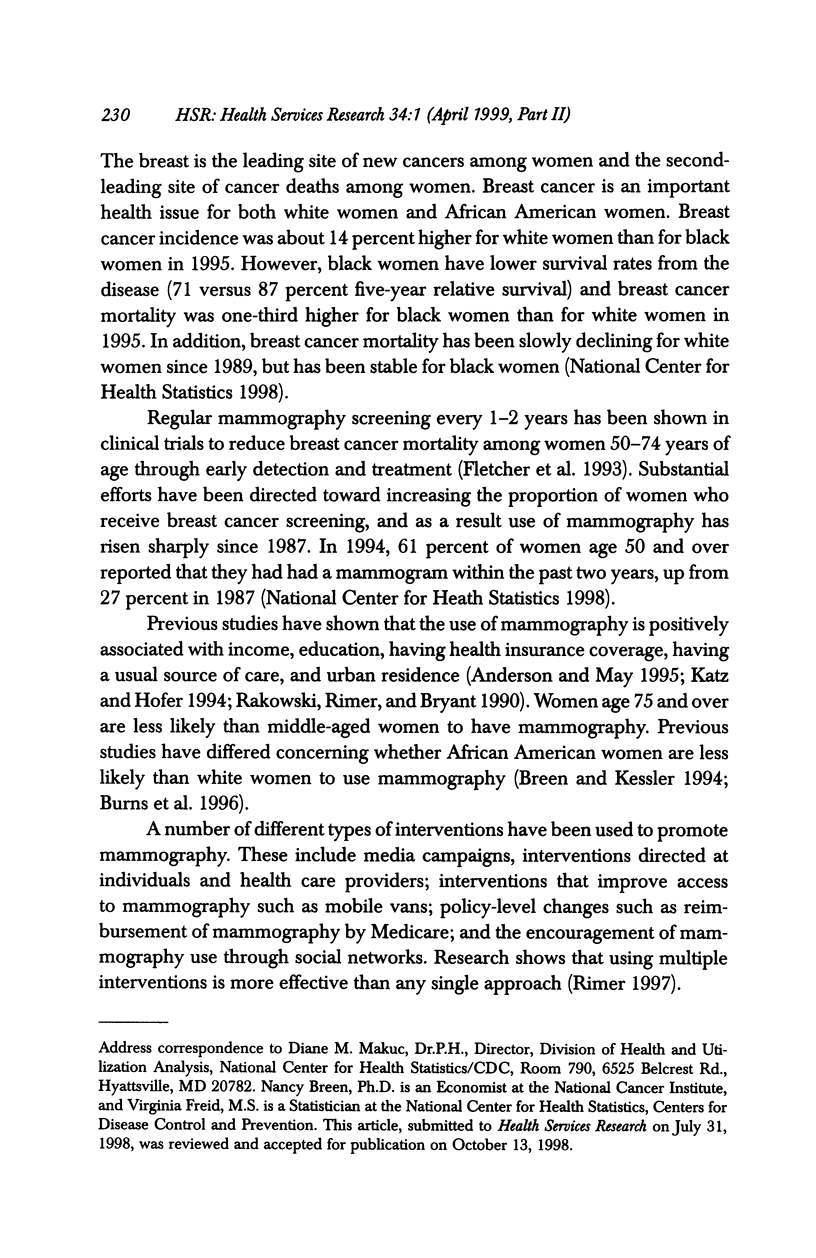
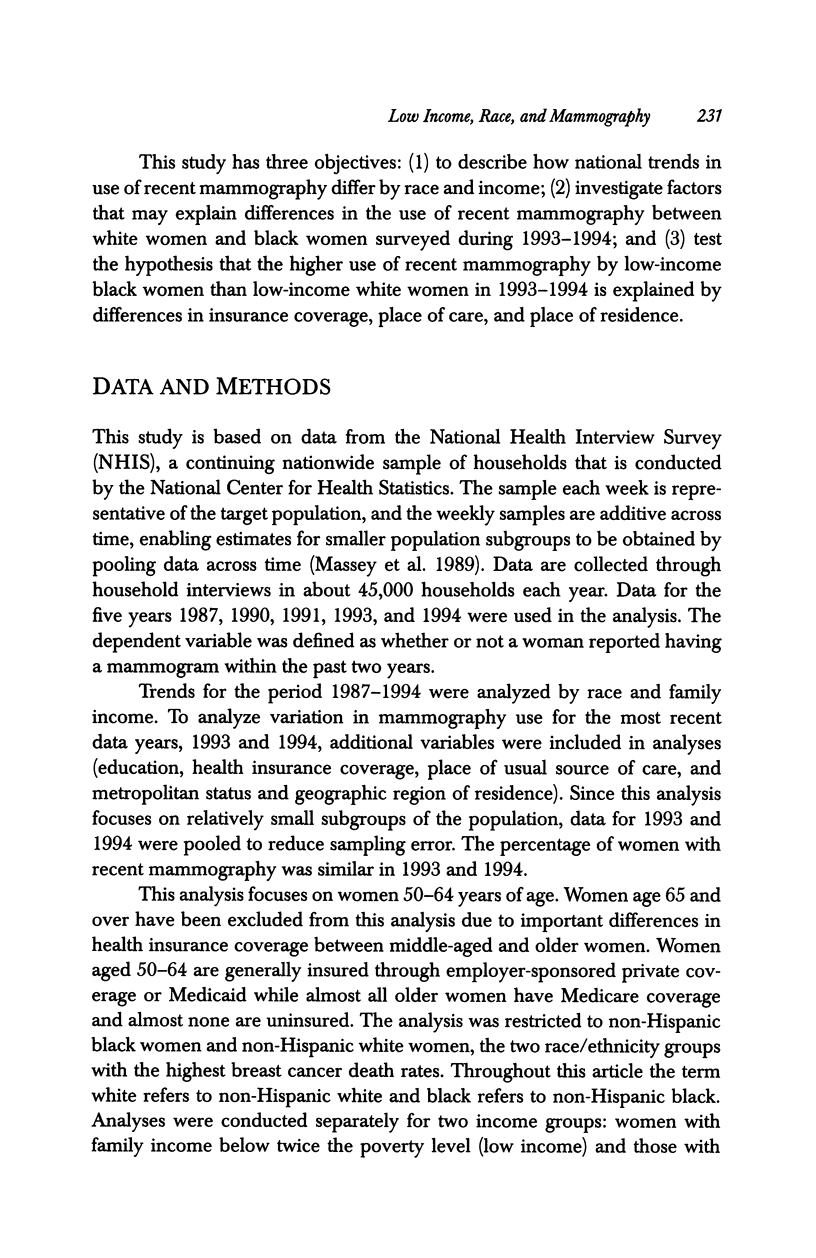
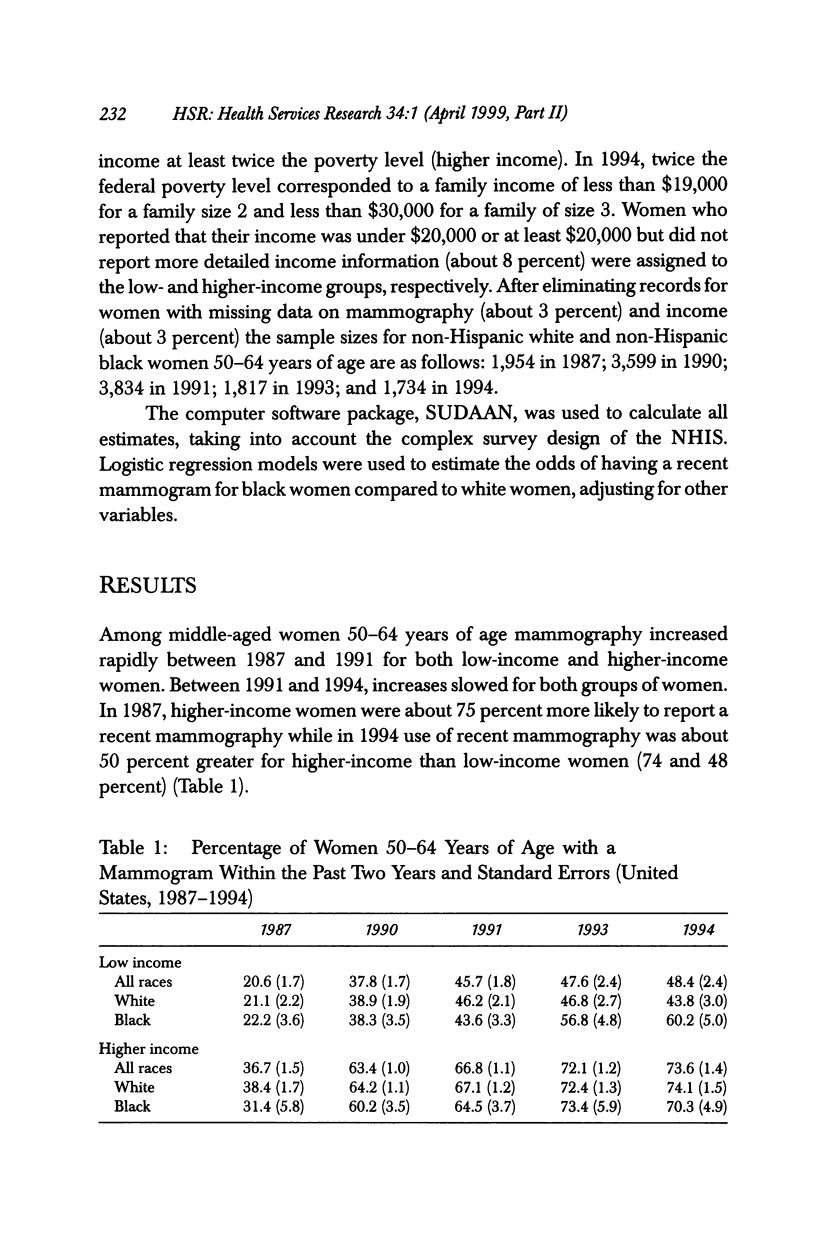
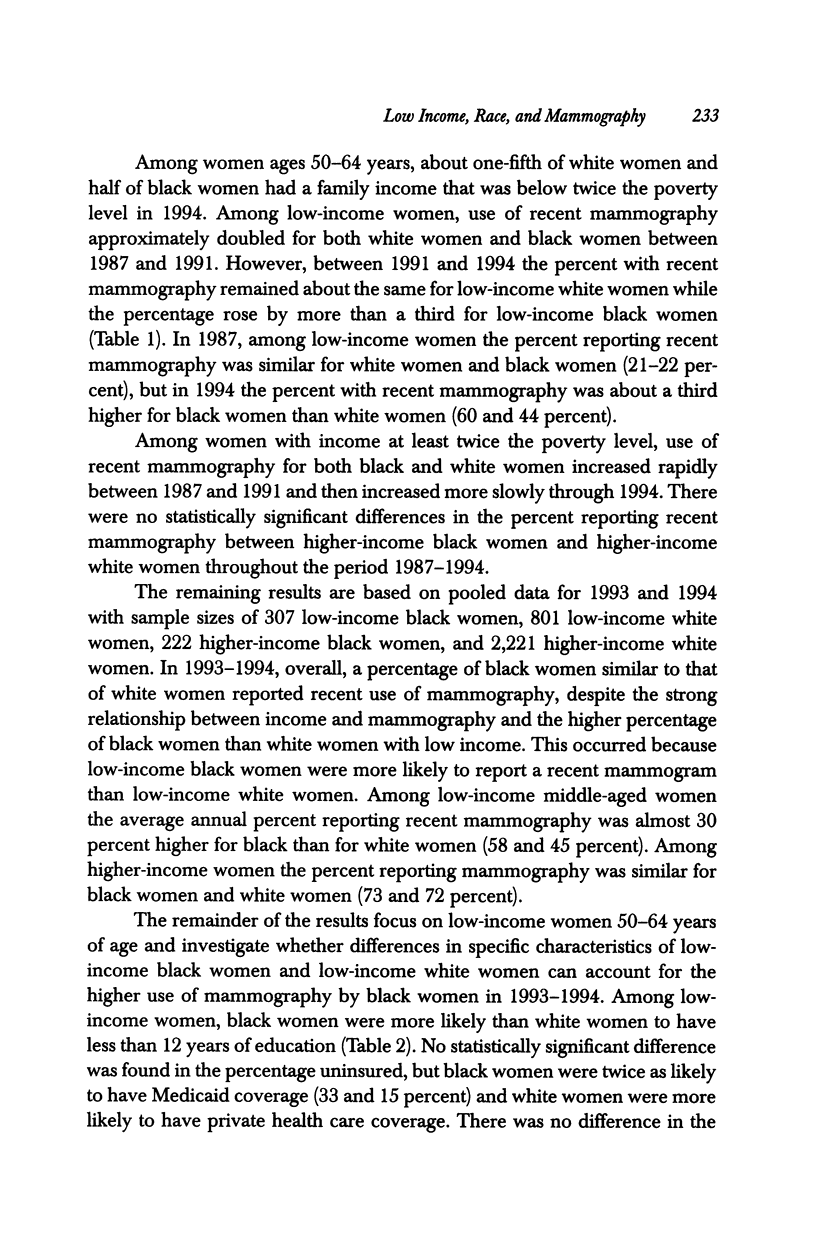
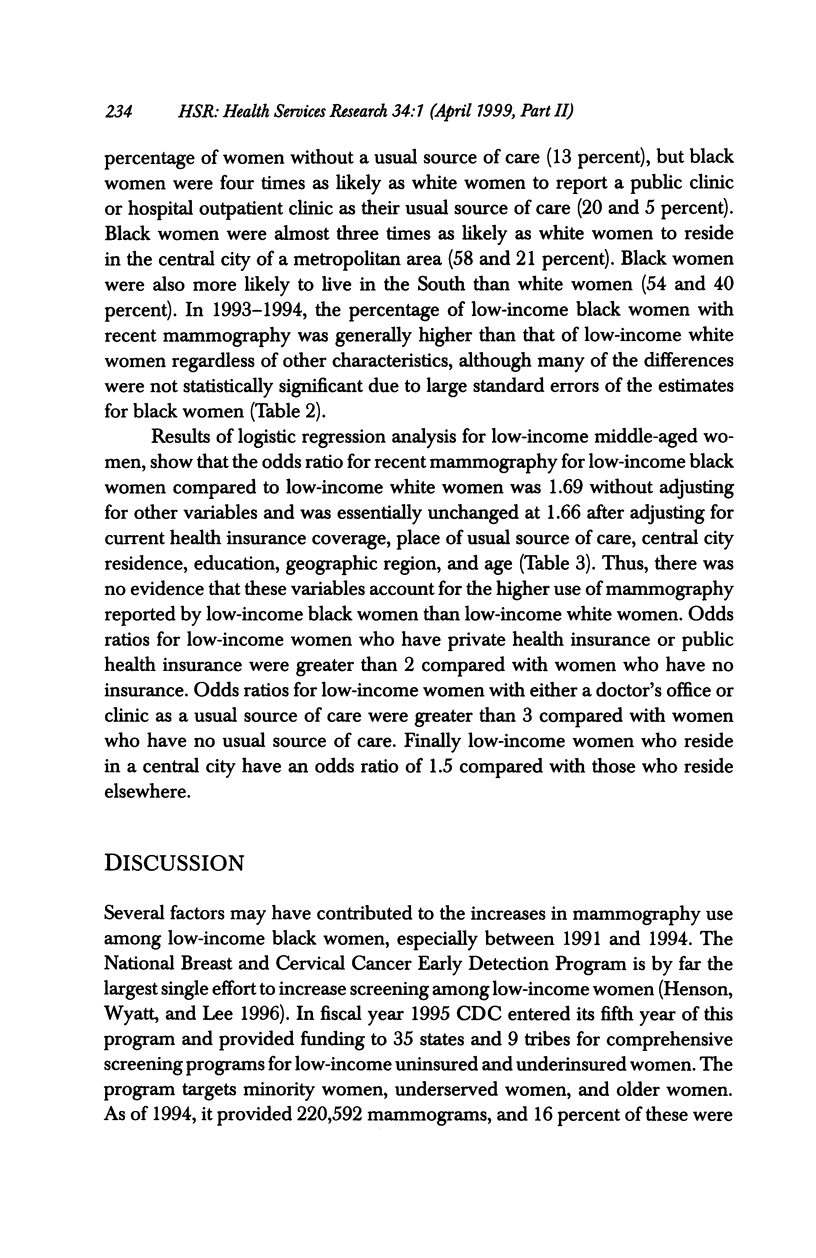
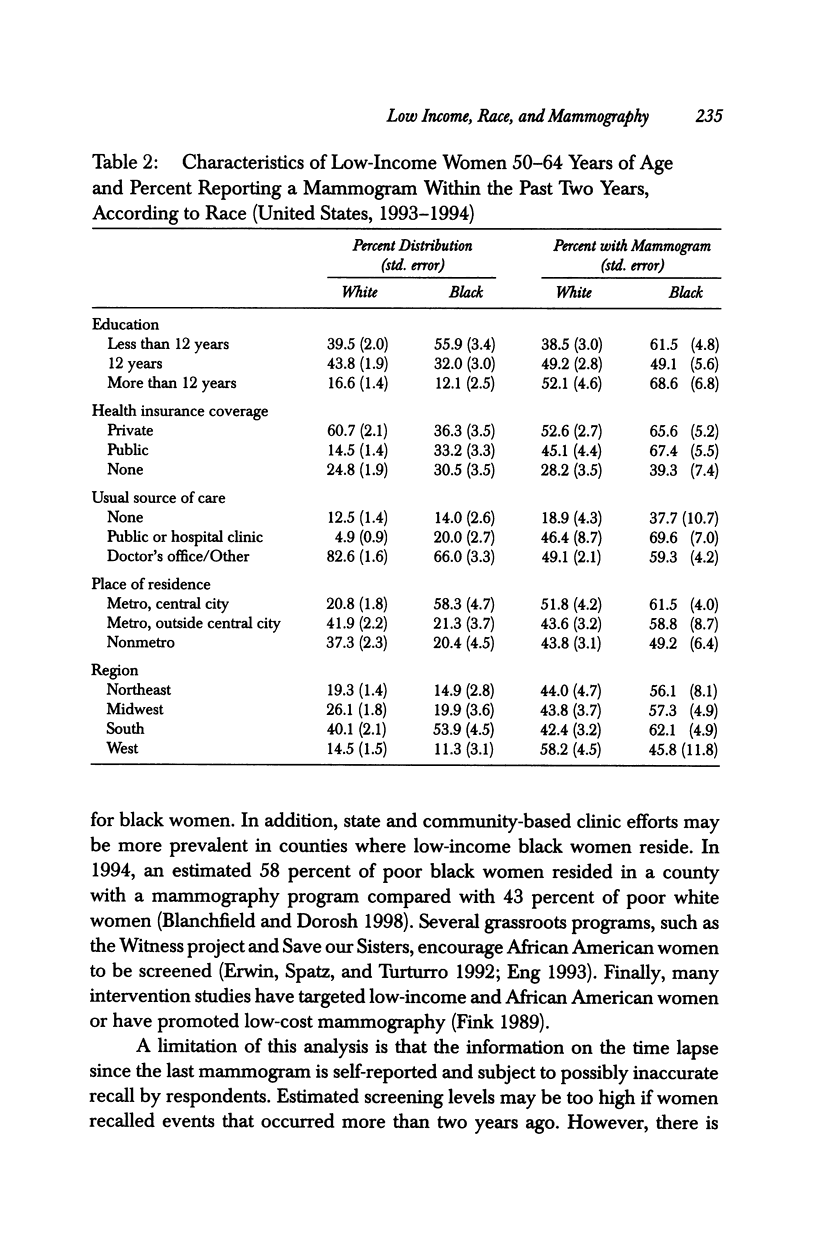
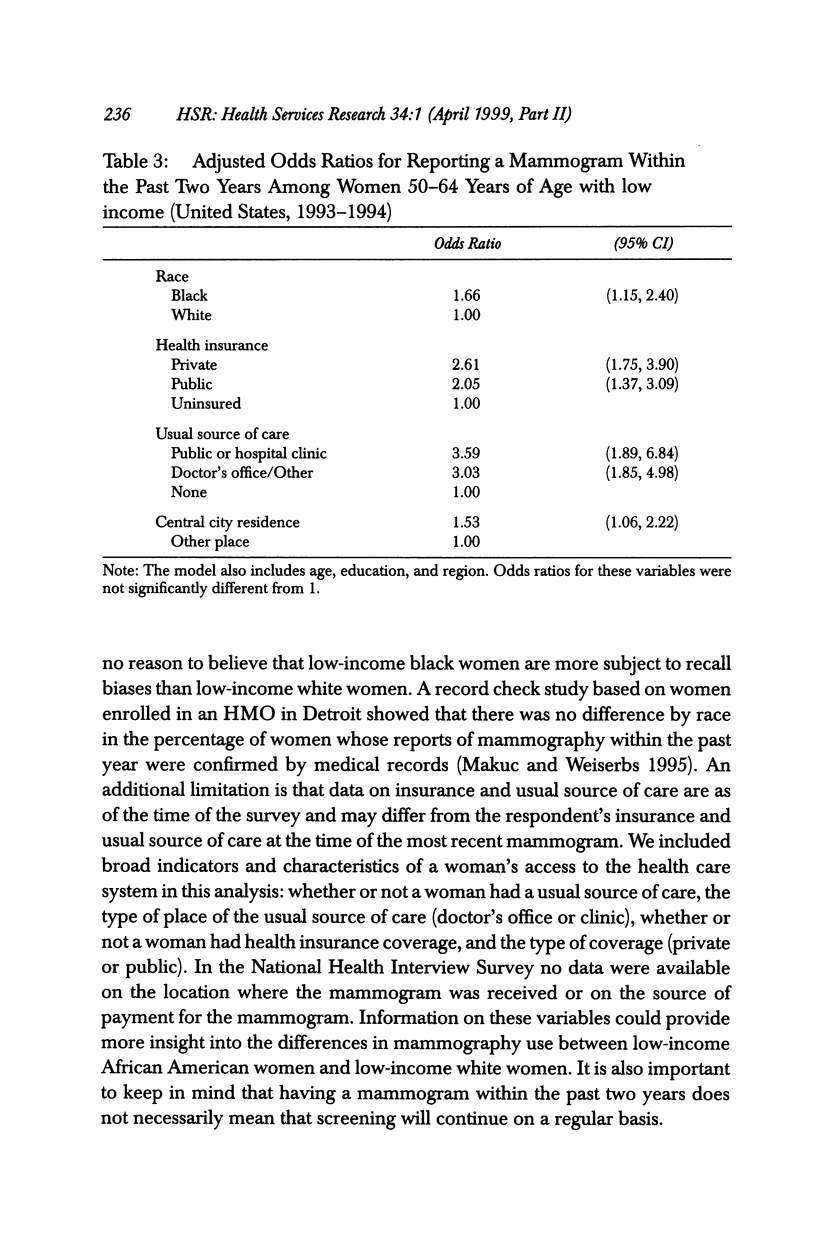
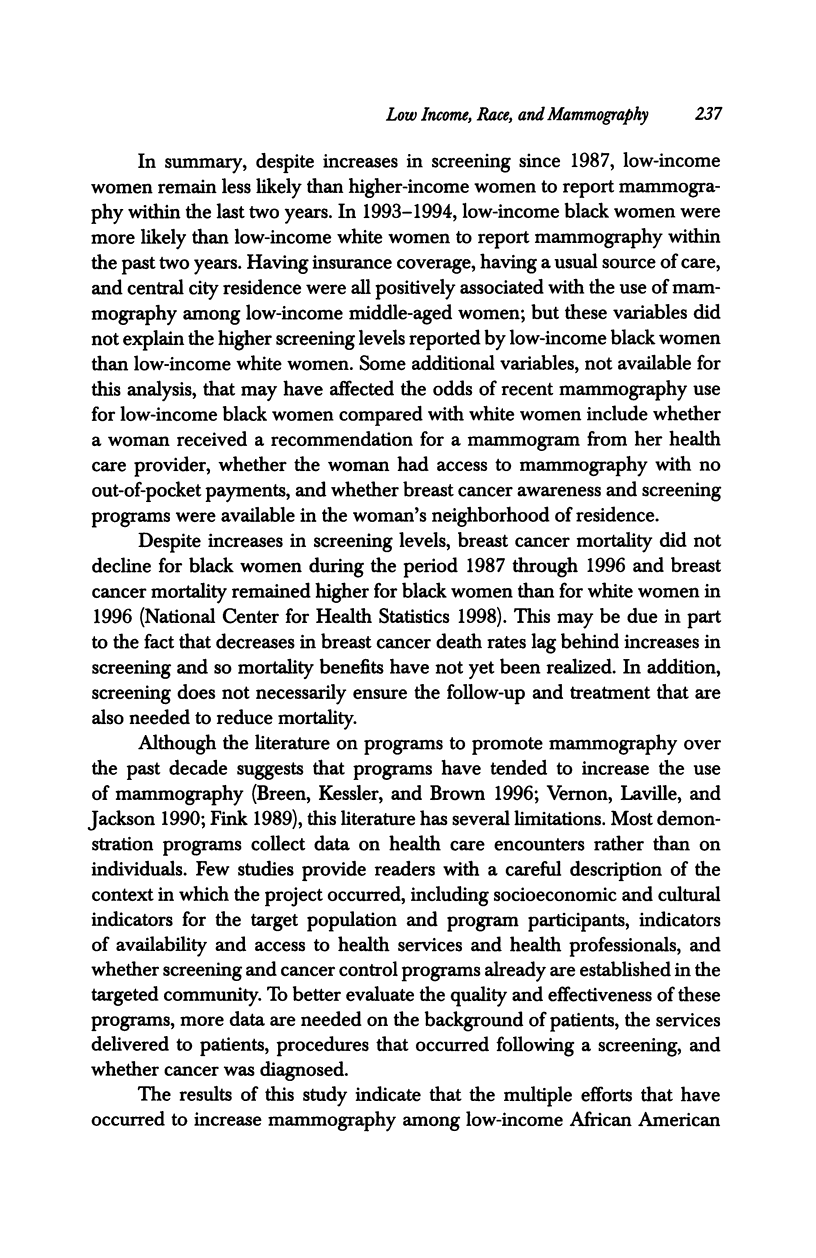
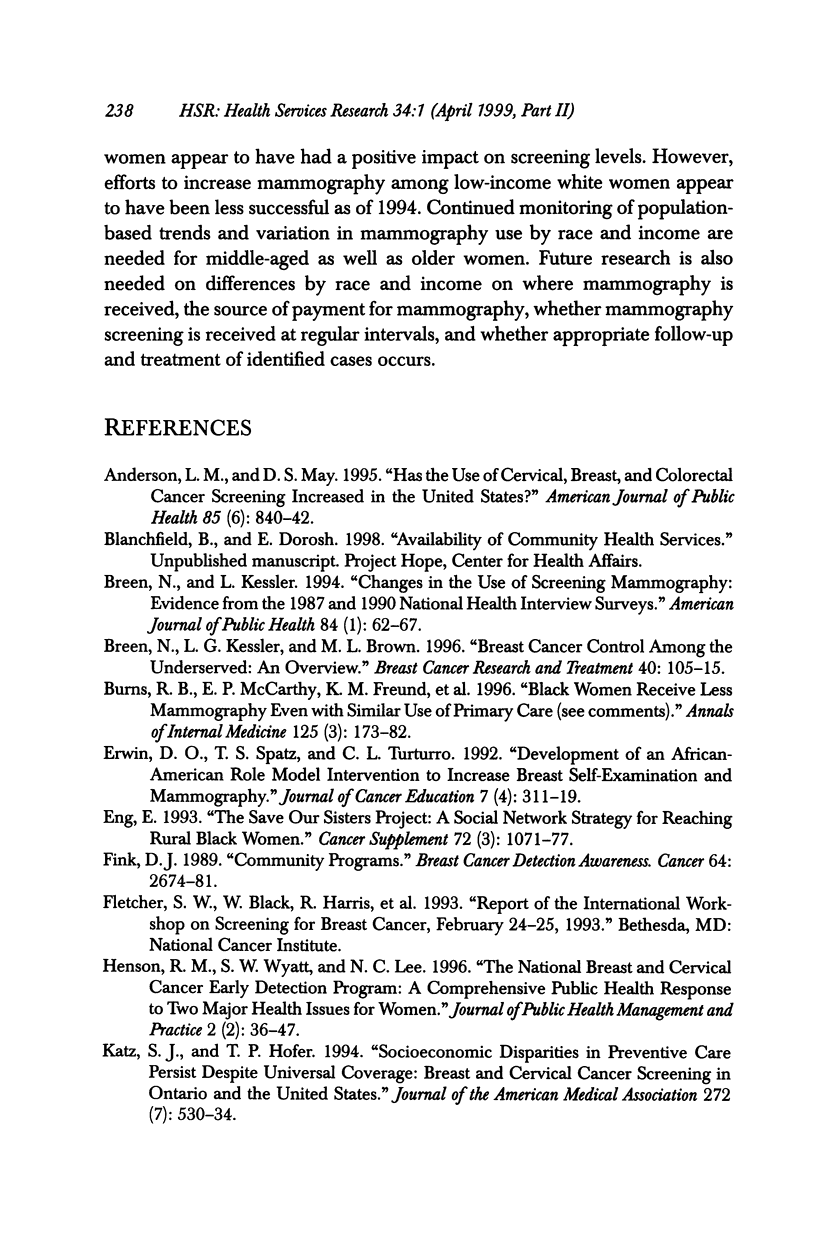
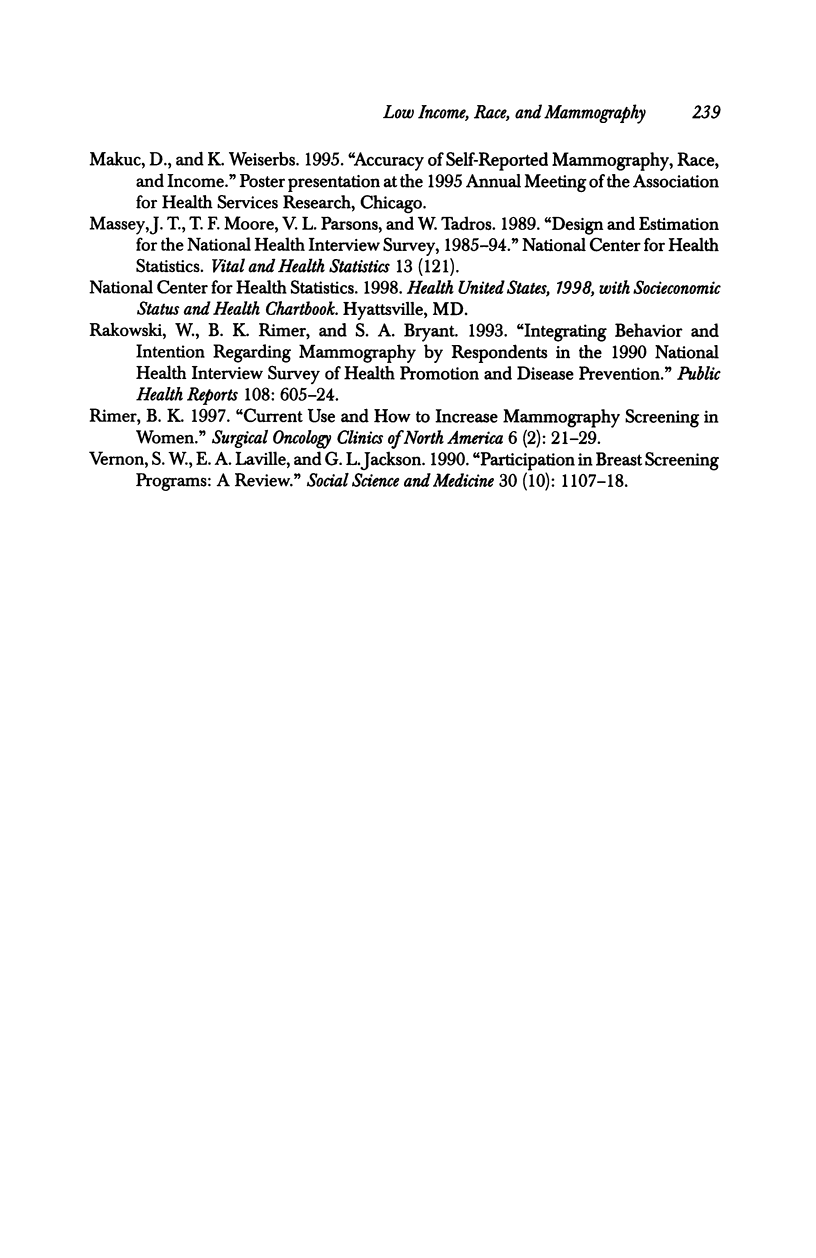
Selected References
These references are in PubMed. This may not be the complete list of references from this article.
- Anderson L. M., May D. S. Has the use of cervical, breast, and colorectal cancer screening increased in the United States? Am J Public Health. 1995 Jun;85(6):840–842. doi: 10.2105/ajph.85.6.840. [DOI] [PMC free article] [PubMed] [Google Scholar]
- Breen N., Kessler L. G., Brown M. L. Breast cancer control among the underserved--an overview. Breast Cancer Res Treat. 1996;40(1):105–115. doi: 10.1007/BF01806006. [DOI] [PubMed] [Google Scholar]
- Breen N., Kessler L. Changes in the use of screening mammography: evidence from the 1987 and 1990 National Health Interview Surveys. Am J Public Health. 1994 Jan;84(1):62–67. doi: 10.2105/ajph.84.1.62. [DOI] [PMC free article] [PubMed] [Google Scholar]
- Burns R. B., McCarthy E. P., Freund K. M., Marwill S. L., Shwartz M., Ash A., Moskowitz M. A. Black women receive less mammography even with similar use of primary care. Ann Intern Med. 1996 Aug 1;125(3):173–182. doi: 10.7326/0003-4819-125-3-199608010-00002. [DOI] [PubMed] [Google Scholar]
- Eng E. The Save our Sisters Project. A social network strategy for reaching rural black women. Cancer. 1993 Aug 1;72(3 Suppl):1071–1077. doi: 10.1002/1097-0142(19930801)72:3+<1071::aid-cncr2820721322>3.0.co;2-v. [DOI] [PubMed] [Google Scholar]
- Erwin D. O., Spatz T. S., Turturro C. L. Development of an African-American role model intervention to increase breast self-examination and mammography. J Cancer Educ. 1992 Winter;7(4):311–319. doi: 10.1080/08858199209528188. [DOI] [PubMed] [Google Scholar]
- Fink D. J. Community programs. Breast cancer detection awareness. Cancer. 1989 Dec 15;64(12 Suppl):2674–2681. doi: 10.1002/1097-0142(19891215)64:2+<2674::aid-cncr2820641411>3.0.co;2-r. [DOI] [PubMed] [Google Scholar]
- Henson R. M., Wyatt S. W., Lee N. C. The National Breast and Cervical Cancer Early Detection Program: a comprehensive public health response to two major health issues for women. J Public Health Manag Pract. 1996 Spring;2(2):36–47. [PubMed] [Google Scholar]
- Katz S. J., Hofer T. P. Socioeconomic disparities in preventive care persist despite universal coverage. Breast and cervical cancer screening in Ontario and the United States. JAMA. 1994 Aug 17;272(7):530–534. [PubMed] [Google Scholar]
- Rakowski W., Rimer B. K., Bryant S. A. Integrating behavior and intention regarding mammography by respondents in the 1990 National Health Interview Survey of Health Promotion and Disease Prevention. Public Health Rep. 1993 Sep-Oct;108(5):605–624. [PMC free article] [PubMed] [Google Scholar]
- Vernon S. W., Laville E. A., Jackson G. L. Participation in breast screening programs: a review. Soc Sci Med. 1990;30(10):1107–1118. doi: 10.1016/0277-9536(90)90297-6. [DOI] [PubMed] [Google Scholar]


